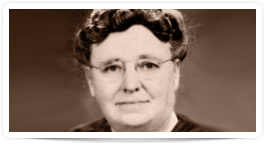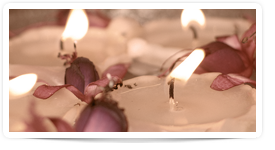
What is Reflexology?

It is well known that Reflexology is a science that deals with the principal that there are reflex areas in the hands, ears and feet that correspond to all glands, organs, and parts of the body. Using the thumb and fingers, a certified reflexologist can stimulate natural surfaces to these reflex areas thereby inducing relief to the corresponding glands, organs or parts of the body. In the same way one would feel sensation in ones own ear, hand or foot, and would be drawn to touch, scratch or rub the area in order to dissipate the congestion in the tissue, Reflexology takes this scenario to new heights as we think of the body in a brand new way.
What is the Ingham Method?

The Ingham Method is the combined work of the late Eunice Ingham and her nephew Dwight C. Byers, the world's leading authority on foot Reflexology. Mr. Byers, director of the International Institute of Reflexology, and/or his hand picked instructors conduct on-going workshops on a worldwide scale to both laymen and professionals.
What does Reflexology do?

Reflexology is known for its ability to relieve tension and stress and promote relaxation. Most of us are naive to how damaging stress can be. According to the American Institute of Stress, under the headline, AMERICA'S # 1 Health Problem, stress ranks above cancer or AIDS. With an estimated 75-90 percent of all visits to primary care physicians are for Stress related problems. Although our environment has changed, the human body has not, and this ancient method of relieving stress still works. Our modern lifestyles not only cause a great deal of this stress, but also do nothing to relieve it. Reflexology can relieve tension and promote relaxation.
How does it work?

There are many theories about how Reflexology works, but the most commonly held belief is that Reflexology acts to relax those reflexes that in turn are connected to various parts of the body, improving lymphatic drainage and circulation as well as relaxing muscles and stimulating nerve connections. Reflexology is primarily a relaxation technique, and while research clearly indicates that Reflexology benefits patients health in both chronic and other ailments, it is not a substitute for medical treatment, and should be considered as complementary to any type of medical treatment. Extensive research on Reflexology has validated the effectiveness of Reflexology.
Does it cure diseases or ailments?

Reflexology is not intended to cure diseases or ailments. Reflexologists are not medical practitioners and are not allowed to diagnose ailments or treat disease. Reflexology can be a valuable way of indicating areas where higher stress or tension is present in the body and can assist to relieve that stress or tension which can promote or encourage the natural healing process.
What is a treatment like?

With the client relaxing in a comfortable position, the reflexologist will begin on bare feet. No tools are used, no gadgets or creams, only the strong competent fingers of the trained reflexologist's hands can be felt as they peruse your feet looking for the reflex points that will affect the corresponding relief to body glands, organs and parts of the body. As the body is considered to be a whole unit, sessions usually last from 45 to 60 minutes. Yes, Reflexology is safe for everyone!
What are the benefits of Reflexology?

If one body system is under-active or over-active it can put undue responsibility on another body system and therefore cause a stressful internal situation. Reflexology enables the body's natural healing processes to promote wellness, giving back responsibly to each and every organ, gland, and part of the body. This brings with it a sense of well being, the feeling that you are one within yourself. Reflexology primarily eases stress and tension, which in turn can improve blood circulation, lymph drainage, assist in the elimination of toxins, and strengthening of the immune system. It enables the body's natural healing processes to promote wellness.
What about Massage, Acupuncture etc?

Reflexology is not the same as massage, which involves tissue and muscle therapy to promote relaxation. Acupuncture, Acupressure and Shiatsu are similar in some respects to Reflexology in their use of reflexes or meridians of the body, however Reflexology focuses on the manipulation of those reflexes through the avenue of the nerve endings of the feet and hands to reduce stress and tension, the same way one would benefit by a walk on the beach or stony tureen in an ancient lifestyle. The other therapies are based on the belief that 'Chi' or energy flows through the meridians and that the therapy improves the flow of 'Chi' by reducing or eliminating blockages.
Can Reflexology make a condition worse?

No. If you ask your doctor he may say it was essentially harmless, therefore, there are no contraindications (negative side affects). However, as one may imagine, while relieving stress there may be releases, symptoms that are temporary and not considered to be serious. It is thinking of the body in a brand new way, not to treat any medical disorder but to promote better health, an adjunct, if you will, to conventional medicine or any other health regime, and yet not to be compared as such. Reflexology is a unique modality, a type of preventative maintenance.
Is Reflexology new?

Although recently becoming much more popular and accepted in Western society, Reflexology has been practiced for thousands of years by Egyptians, Native American cultures and Mayan and Incan civilizations. It is widely accepted in many European countries as an accepted therapy. Modern Reflexology has its origins in the late 1930's, thanks to Eunice Ingham.